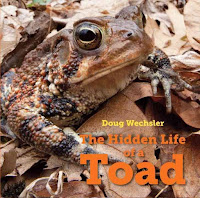Today's post is contributed by Stacey Rattner, the "leaping librarian" at Castleton Elementary School, just outside of Albany, NY. For the past two years she has run a 10 week Mock Geisel project with a collaborating first
grade teacher and looks forward to doing it again this year. You can follow her
on Twitter @staceybethr or http://librarianleaps.blogspot.com/.
I
cannot wait to get Let’s Go to the Moon! by Erica Silverman and
illustrated by Jess Golden into the hands of my first grade Mock Geisel
Committee members this fall. As they
soar into the story, I know they are going to feel “over the moon” as they
successfully read it aloud or quietly to themselves.
Lana
wants to go to the moon but can’t find anyone in her family to join her, even
her dog, Furry. Instead of giving up,
she retires to her room to build her own rocket. When she finally lands on the
moon she meets moon man, moon woman and two moon boys, Super-Nova and
Ninja-Nova. Only after a full day of moon fun (and that’s an understatement),
does Lana realize she misses being home. Where else can you bake moon cookies
with your family? Yum!
With
a page turning plot and repetitive text throughout, I think this is a likely
contender for the Geisel award. The second page alone has “moon” written four
times.
When
I talk about the Geisel award with my students, I ask them to describe at least
one page where the illustrations help tell the story. Silverman’s light water
color pictures help move the story along and certainly work to aid our young
readers with the text. It starts as
quickly as you can read page 1. “Mama and Papa were raking the leaves.” Having trouble with figuring out the words “raking”
or “leaves”? Let your eyes wonder just a
bit and there’s Mama and Papa busy with their yard work And while you are at
it, make sure to check out Mama’s cute flowered gloves.
The
sentences are short and always stay on one page, which really helps our
emerging readers. Are there some
challenging words? Sure—trampoline
(although the illustration helps), gravity, Earth (perhaps?), Ninja (but that
might be a word kids just know now), are just a few. I don’t think that’s enough for this not to
be a serious contender for the Geisel award.
We
also ask our students if the book is a page turner? Did you want to read more? Absolutely!
Poor Lana cannot find someone to join her on a moon excursion.
Thankfully that doesn’t stop her! She is
resourceful and imaginative and puts those traits to work. DO try this at home,
friends. How can YOU build a rocket in
your bedroom? The possibilities are endless.
We’ve
all had that time when we couldn’t find anyone to play with us. This book takes that time and turns it
positive. You don’t want to go to the
moon with me? Fine, then I will just go myself.
I predict that fans of the Don’t Throw it to Mo format and the Bink
and Gollie adventures will travel to the moon with Lana night after
night while the 2018 Geisel Committee seriously considers where to put a
sticker on the cover.























